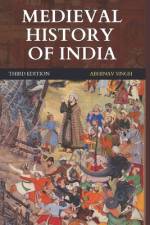av Abhinav Singh
367
This book provides a comprehensive exploration of the cultural history of India, focusing on the period from the thirteenth to the seventeenth centuries. It delves into the complex interactions and transformations in India's social, economic, and cultural landscape during the Muslim rule, spanning from the Delhi Sultanate to the Mughal Empire.The narrative highlights the synthesis of Indian and Islamic influences, resulting in a rich tapestry of art, architecture, literature, and music. It discusses the religious dynamics, including instances of religious tolerance and persecution during the medieval era. The emergence of prominent religious figures like Kabir and Nanak, who advocated universal brotherhood, is explored. The book also examines the impact of Mughal rulers, such as Akbar's policy of religious tolerance and Aurangzeb's reversal of it, leading to the decline of the Mughal Empire.The political landscape of the eighteenth century sees a resurgence of Hindu power, especially with the Marathas and Sikhs. The book analyzes the conservative nature of Hinduism during this period and the lack of notable cultural revival despite political changes. The influence of Europe on India, with the establishment of European trading posts, is discussed, leading to the dominance of the British East India Company by the early nineteenth century.The book emphasizes the deepening connections between India and the Muslim world during this era and the flourishing of urban society. It provides insights into the struggles for political power, the military and administrative institutions of both sultans and Mughals, and the dynamics between Hindus and Muslims in social and economic spheres. Additionally, it explores the impact of European trade on India's economy and the unique features of Muslim philosophical movements, Sufi ideologies, and sectarian divisions.A dedicated chapter on the arts highlights the significant influence of ancient Indian motifs on Muslim expressions in architecture, painting, and music. The book aims to fill gaps in literary sources by exploring monuments and paintings from this period. Overall, it presents a nuanced and in-depth examination of the cultural history of India during the medieval era, offering readers a comprehensive understanding of the intricate interactions that shaped the subcontinent's diverse and enduring civilization.





